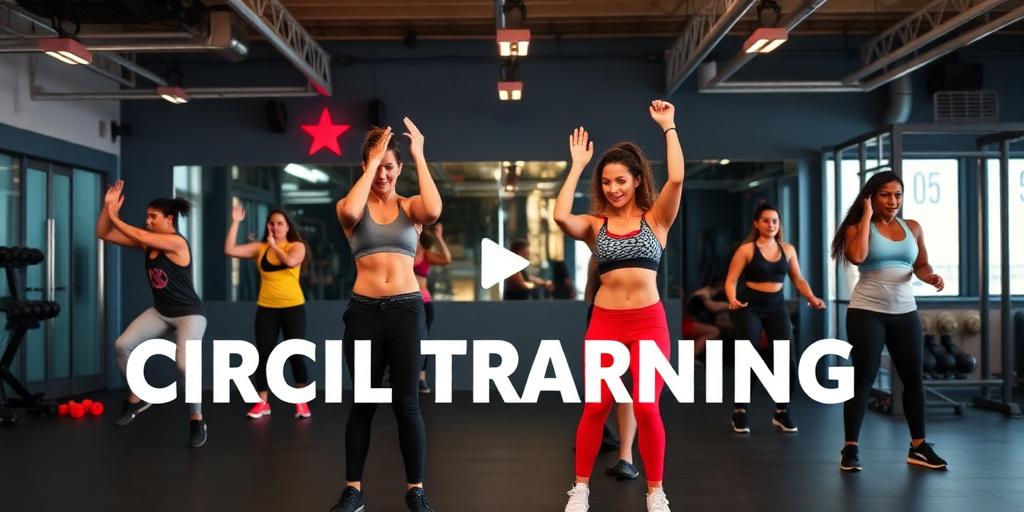Circuit Training Programs for Fat Loss and Fitness
Circuit training is a highly effective method for achieving both fat loss and improved fitness. By combining a series of exercises performed in quick succession with minimal rest, circuit training elevates your heart rate, burns calories, and builds strength. This comprehensive guide explores the benefits of circuit training, provides sample programs, and offers tips for maximizing your results.
What is Circuit Training?
Circuit training involves performing a series of exercises, typically ranging from 5 to 10, one after the other with little to no rest in between. Once all exercises in the circuit are completed, a short rest period is taken before repeating the circuit multiple times. This method combines cardiovascular and strength training, making it an efficient way to improve overall fitness.
Benefits of Circuit Training
- Fat Loss: Circuit training burns a significant number of calories due to its high-intensity nature. The combination of cardio and strength exercises helps boost metabolism and promote fat loss.
- Improved Cardiovascular Fitness: The continuous movement and elevated heart rate improve cardiovascular health, enhancing endurance and stamina.
- Muscle Building and Toning: Incorporating resistance exercises in the circuit helps build and tone muscles, improving overall strength and definition.
- Time Efficiency: Circuit training is a time-efficient workout option, as it combines multiple exercises into a single, streamlined routine.
- Versatility: Circuit training can be adapted to suit various fitness levels and goals. Exercises can be modified, and circuits can be customized to target specific muscle groups or fitness components.
Sample Circuit Training Programs
Here are three sample circuit training programs designed for different fitness levels:
Beginner Circuit
- Jumping Jacks: 30 seconds
- Bodyweight Squats: 10 repetitions
- Push-Ups (on knees if needed): 10 repetitions
- Walking Lunges: 10 repetitions per leg
- Plank: 30 seconds
Rest for 60 seconds after completing one circuit. Repeat the circuit 3-4 times.
Intermediate Circuit
- Burpees: 10 repetitions
- Dumbbell Squats: 12 repetitions
- Push-Ups: 12 repetitions
- Dumbbell Lunges: 12 repetitions per leg
- Mountain Climbers: 30 seconds
- Crunches: 15 repetitions
Rest for 45 seconds after completing one circuit. Repeat the circuit 4-5 times.
Advanced Circuit
- Box Jumps: 10 repetitions
- Thrusters (Dumbbell or Barbell): 10 repetitions
- Pull-Ups: As many repetitions as possible (AMRAP)
- Walking Lunges with Overhead Press: 10 repetitions per leg
- Plank with Shoulder Taps: 20 repetitions
- Russian Twists with Weight: 20 repetitions
Rest for 30 seconds after completing one circuit. Repeat the circuit 5-6 times.
Tips for Maximizing Results
- Warm-Up: Always start with a 5-10 minute warm-up to prepare your muscles and joints for exercise. Include light cardio and dynamic stretching.
- Proper Form: Focus on maintaining proper form throughout each exercise to prevent injuries. If you're unsure about the correct form, consult a fitness professional.
- Progressive Overload: Gradually increase the intensity or duration of your circuits as you get fitter. This can be done by adding more repetitions, increasing the weight, or reducing rest times.
- Listen to Your Body: Pay attention to your body and don't push yourself too hard, especially when starting. Rest when needed and modify exercises if necessary.
- Cool-Down: Finish with a 5-10 minute cool-down to help your body recover. Include static stretching, holding each stretch for 20-30 seconds.
- Nutrition: Combine your circuit training with a balanced diet to maximize fat loss and fitness gains. Focus on whole foods, lean proteins, and plenty of fruits and vegetables.
Conclusion
Circuit training is an excellent way to achieve fat loss and improve overall fitness. By following the sample programs and tips provided in this guide, you can design effective workouts that suit your fitness level and goals. Remember to prioritize proper form, listen to your body, and gradually increase the intensity to maximize your results.









